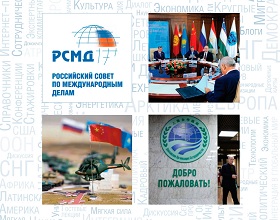The meeting of CIS heads of state held in Kazakhstan on 16 October 2015 drew attention with its multilateral format, which has long been the subject of the phrase “either good or nothing.”
The meeting of CIS heads of state held in Kazakhstan on 16 October 2015 drew attention with its multilateral format, which has long been the subject of the phrase “either good or nothing.”
In both Russia and other post-Soviet states, the Commonwealth is viewed as an instrument for soft adaptation to gradual, but consistent and inevitable differentiation of foreign policy and foreign economy priorities of the countries of the former Soviet Union. CIS summits have held meetings of political leaders of the member states that were largely inter-personal in character. Traditionally, they have discussed protocol issues: the level of representation of a given CIS country, prompting conclusions about how willing a political regime was to preserve the traditional preferential links with Russia and with the other partners sharing a common past.
Yet the dramatic changes in the security sphere on the outer perimeter of the CIS, with their inevitable consequences for the internal stability of the member countries, have brought the Commonwealth states back to the need for active discussion of the broadest possible military-technical cooperation [1]. That the formats of bilateral links with Russia and even the CSTO no longer suffice for this field is witnessed by the Burabay summit, which adopted declarations on the joint struggle against international terrorism, a new Concept for Military Cooperation between the CIS States and a programme of cooperation by the CIS states in strengthening their external borders for 2016-2020.
The Central Asian countries are again, as in the early 1990s, concerned about the growing threat of penetration by Islamism into their territories from northern Afghanistan. This topic has been at the top of the agenda of the recent summits of the Collective Security Treaty Organisation and in Russia’s bilateral relations with Tajikistan, Kyrgyzstan and Uzbekistan. Awareness of the threat had sharpened and made necessary a search for new mechanisms and instruments for combating it in connection with the launch of the Russian military cooperation in Syria and simultaneous ISIS offensive in the northern provinces of Afghanistan, close to the external border of the CIS. Russian foreign policy, both regionally and globally, faces the challenge of involving the post-Soviet states in common multilateral military cooperation. Neither Uzbekistan nor Turkmenistan are members of the CSTO and their relations with Moscow are not without problems, so strengthening of the CIS security format opens up opportunities for increasing Russia’s military-political influence in the region.
The results of the CIS summit show that the Central Asian states are inclined to tone down their resentment of the growing Russian presence, even though it will inevitably increase Moscow’s influence on the internal political processes within the region’s states, because they see it primarily as a safeguard for the stability of their regimes. Consequently, Russia is consistently pursuing a course for consolidation and coordination of military-political and defence cooperation in the post-Soviet space, considering Central Asia as a priority. One of the topics discussed at the Summit was the return of Russian military to guard the Tajik-Afghan border, a function that was transferred to Dushanbe in 2005.
For Russian foreign policy, the main unknown in this area is the extent to which the CIS states are prepared to share the Russian vision of CIS collective security. National foreign policy strategies of the Central Asian states still show signs of attempting to find a counterweight to Russia’s military-political influence. Turkmenistan, for instance, kept its participation in the latest Summit to a minimum, concentrating its foreign policy on seeking support in the USA. Kyrgyz President I. Karimov pulled no punches in describing the Summit’s agenda as being “divorced from reality.” Kyrgyzstan and Tajikistan are seeking to preserve independence in protecting their border and maintaining national security, while asking Russia for more military-technical and financial assistance.
Russia is having little success in involving the CIS western flank in the system of CIS collective security. Neither Moldova nor, of course, Ukraine were properly represented at the CIS summit. The Belarusian President, after being elected for another term, is again stepping up the multi-vector approach to foreign policy as highlighted, in the context of military-technical cooperation, by his controversial remarks concerning the opening of a Russian military base in his Republic.
Consequently, in spite of the external situation and the overall increase in Russia’s efforts to build a comprehensive CIS security system, Moscow will again be faced with the need to make difficult compromises with the parties involved.
The sharp discussion of security matters at the CIS summit overshadowed the parallel meeting of the Supreme Eurasian Economic Council, the governing body of the largest economic integration project in the post-Soviet space. Yet the results of that meeting are also mixed: the summit made some changes to the composition of the Eurasian Economic Commission. From February 2016, the new Chairman of the Commission will be former Armenian Prime Minister Tigran Sarkisyan, who will succeed Viktor Khristenko. What is intriguing is not so much Moscow’s loss of one of the key positions on the Council as the Armenian representative being known as a fierce opponent of Armenia’s membership of the Eurasian Economic Council and a supporter of the Republic’s rapprochement with the EU. So, in the Eurasian Economic Union format, too, Russia will face new challenges to the effectiveness of the organization and Russia’s role in promoting its line there.
1. For more on the formation of the military-political cooperation in the CIS, read: Никитин А.И. Конфликты, терроризм, миротворчество. – М.: Навона, 2009. (Nikitin A.I. Conflicts, Terrorism, Peace-Keeping. Moscow, Navona publishers, 2009, 232 pp.)






